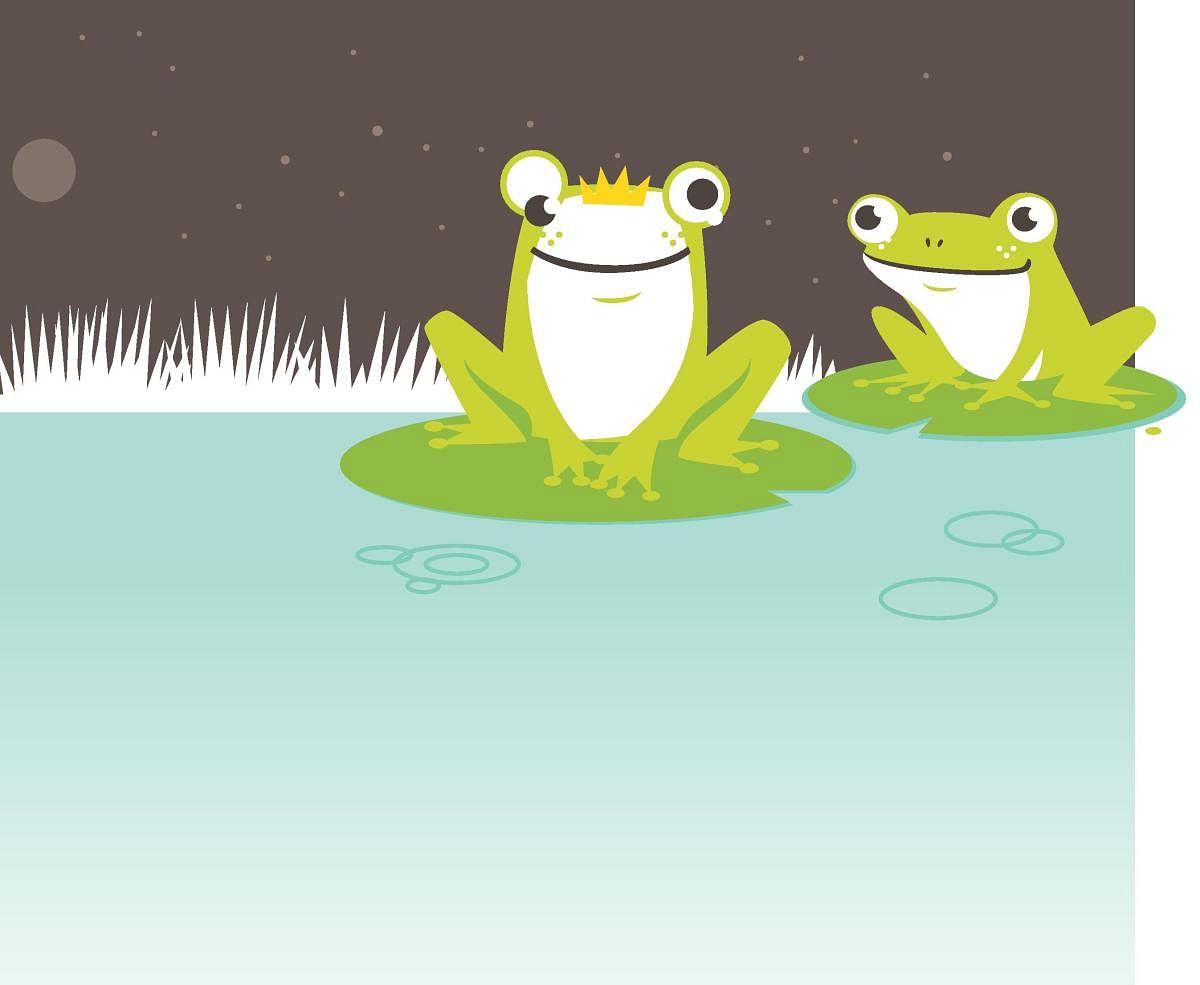
The cheerful chirps of crickets and croaks of frogs resonated in the cool night air. A colony of frogs was very happy in their home by the pond where they found an ample supply of insects and mosquitoes to eat.
One day, a keelback snake moved into their neighbourhood as it had heard that the pond was home to many frogs. The keelback started feasting on the frogs. Soon the frogs started disappearing and their population began dwindling drastically.
The frogs held a meeting by the pond. They croaked loudly in chorus creating a cacophony, wondering what they should do to solve the problem. “Since we are amphibious and capable of staying both in water and on land, perhaps we will be safer in the waters of the pond,” they concluded.
Unfortunately, the snake could swim as well and started attacking the helpless little tadpoles in the water. The frogs found that they were not safe there either.
They called another meeting under a Ficus tree that grew around the water body. “What shall we do?” they croaked in desperation. The Ficus tree sighed deeply and said, “Forgive me for interrupting but I couldn’t help overhearing. We are facing a similar problem with these insects that are eating up our leaves. Perhaps you could help us with our problem and we can help you with yours. I have an idea,” the tree whispered to the frogs.
Willing to help out the Ficus trees, the frogs moved their residence and began living near the trees. They started eating the insects which troubled the trees. The trees in that area started getting healthy again.
Meanwhile, the snake wondered where all the frogs had disappeared and set off on a trip in search of them. The frogs heard the familiar rustle of the snake gliding over the forest path and the crackling of dry leaves in its wake.
“Quick, smear yourself in the black mud and hide beneath our fallen leaves,” the wise Ficus said. The frogs did as they were told. Petrified, they got under the leaves and stayed as still as possible. They didn’t dare move, as the snake slithered past them. He didn’t have the slightest suspicion that he was just two feet away from his prey as he continued on his way, meandering down the leafy path.
The snake never figured out where the frogs had disappeared to and soon their numbers multiplied. Both the Ficus trees and the frogs were happy with their mutually beneficial arrangement.
They say that those who live together for a long period of time begin to resemble one another. After years and years of smearing themselves in black soil, the frogs’ skin darkened to a blackish hue and their backs became tan coloured like the dry leaves they hid under. They even developed spots on their backs which resembled the fallen leaves but they didn’t abandon their friends, the Ficus trees, and continued to dwell in what had been their safe haven.
In time, one couldn’t tell the difference between the bicoloured frogs and the fallen leaves. The frogs had adapted to their new environment completely and developed the most perfect camouflage to keep them safe from harm.
(Ashrafi is a children’s writer.)